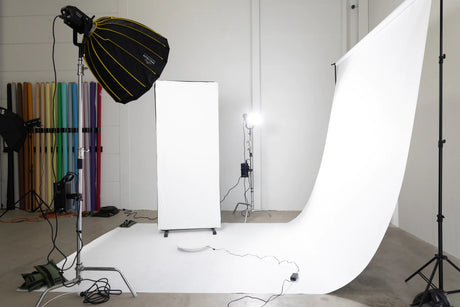The night sky provides a most beautiful sight, one that is most definitely worthy to be captured. And if one wants to immortalise such a spectacular and fascinating view, he/she must get a shot of the Milky Way. And just like anything worthwhile, photographing our home galaxy is not that easy. But this tutorial might help you get there.
Camera Settings
Shutter Speed – 30s: First, let’s deal with the shutter speed. One may opt to use a 30 second shutter speed. This is ideal because if you use a really long shutter speed, you’ll end up with stars that look oblong, thanks to the Earth’s rotation. This particular shutter speed, on the other hand, only makes the stars look just a little bit oblong. And you won’t even notice it unless you really zoom into the photo. This is not to say that 30 seconds of shutter speed is the absolute way to go. It may depend on your lens too. The longer the lens, the shorter shutter speed you’ll need. For example, for a camera with an 18mm lens, you won’t be using a shutter speed that’s over 15 or 20 seconds. The streaking would be much more noticeable because of the larger stars appearing in the frame.
Aperture – f/2.8: You might have gotten used to using a high aperture as it is ideal for landscape photography where you want a maximum depth-of-field. Because of our greater distance from the stars, a lot of photographers think that we must use a high aperture for it too. However, you have to keep in mind that depth-of-field isn’t about where sharpness appears. Rather, it is about how much of the picture is sharp. So in this type of photography, it would be right for you to use the lowest f-stop possible on your lens. As you focus on the stars, you are focused to infinity, or the farthest your lens can focus. A low f-stop will be able to capture the dim star light.
A disadvantage of using a very low aperture value, f/2.8 for example, comes when you want to include a foreground element, which becomes blurry because you focus on the stars. This is where a little Photoshop skill comes in handy. What you can do is take a photo of the stars at the said setting, and then take another one focusing on the foreground. Just simply combine the two photos using an editing software. It may not be the most attractive way of doing things especially for those who are strict about getting it right in the camera, but I can assure you that there’s no other way. It’s the only option, really. For the depth-of-field, a high f-stop is required. But for light gathering, a low f-stop is needed. Since it’s quite impossible to achieve that, post-processing is the way to go here. It’s the most that technology can offer right now.
On the other hand, if you’re taking a photo in an open location like the woods or the desert where you don’t have to worry about the foreground, you’ll do great shooting at f/2.8 without needing help from Photoshop.
ISO-3200: In normal circumstances, you would usually want a low ISO value to avoid getting grainy photos. Once again, you’ll have to make a different consideration once you start doing night photography since most of its types require high ISO values. You can use an ISO of 3200 or higher if your camera permits it. However, with a high ISO combined with a long shutter speed, it would be inevitable for you to get some noise in your photos. But there are a couple of things you can do to lessen that noise. One of which is long exposure noise reduction.
If you own a DSLR that’s been made in the last few years, it would have a long exposure noise reduction option. You’ll find the “Long Exposure NR” in the shooting menu of a Nikon camera. For Canon cameras, you’ll find it in the custom functions in the menu. Each Canon model has a different custom function. Dark frame subtraction is used in this technology.
Focusing
Shooting at night means you won’t have the amount of light that your camera requires in order to autofocus properly since in autofocus systems, some amount of contrast is needed to find a proper focus. A very simple and effective tip is to find a source of light like a streetlight with the same distance from you as where you intend to focus. Just autofocus on that light then on your lens, slide the focus mode switch to manual. That way, you get to stick with the focus you last set unless of course you accidentally twist the manual focus ring on your lens.
If you just want to take a photo of the stars without minding anything in the foreground, you can get your focus all the way to as far as it can go and come back a little bit. By doing that, you’re focusing your lens to infinity, the farthest it can focus, which is ideal for taking pictures of stars. If you’re shooting on a moonlit night, you can focus on the moon if it’s bright enough and you’ll be good to go.
Now if you have to focus on something closer to the camera, shining a flashlight, laser pointer, or any similar object on it will help your camera find focus. You can also try going to the location before dark, then adjust your composition and lock down the focus while you still have enough light around you.
Seeing the Milky Way
Obviously, the previous things I talked about will be of no use if you won’t be able to find your subject, the Milky Way. With a naked eye, people would rarely be able to see it in the night sky. Light pollution has made it difficult, with the artificial lights coming from houses and bright streetlights scattered all over. The bright light coming from those sources makes it hard for our eyes to appreciate the faint glow of the ring around the Milky Way. But thanks to the light gathering ability of recently made DSLRs, we can usually get a good shot of the Milky Way.
If you want to see the Milky Way more easily, I think it’s a good idea to go out when the moon isn’t shining so bright since that additional light in the sky can lessen the Milky Way’s visibility. And get away from the city and rid yourself of the city lights even just for a while. You’ll find that in a rural area, you’ll be able to see the Milky Way with your naked eye. And by taking a picture of it, gathering light with a 30 second exposure, you’ll even see the amazing view more vividly.
It would also be wise to actually know when and where you can spot the Milky Way in your place. In some places, it can be visible most of the night in most days of the year. You can go out, shoot a couple of times, and find out for yourself the time and area where it will rise and set.
Conclusion
Incredible photos do not happen by chance. They take lots of patience, practice, and planning. That’s the way it is in photographing the Milky Way. And when you’re there, gazing at and capturing that spectacular view, the feeling will be precious. Nothing can be more fulfilling than knowing that all that effort would lead to the wonderful experience of seeing the heavenly bodies, celebrating the wonders of the universe, and getting to keep that moment with you (through your beautiful photographs, of course) forever.
The post How To Photograph The Milky Way appeared first on Hypop Photography Tips.










